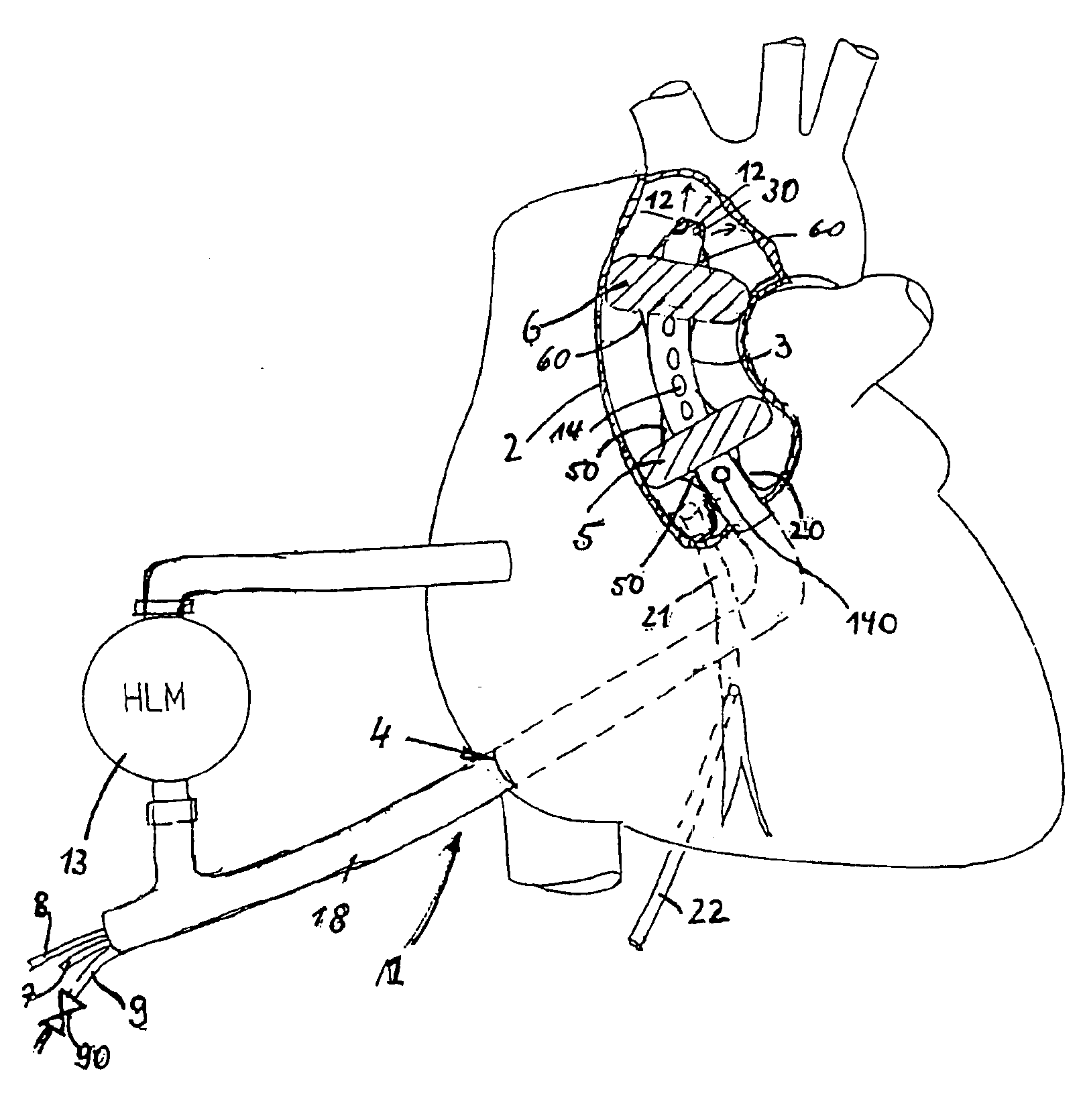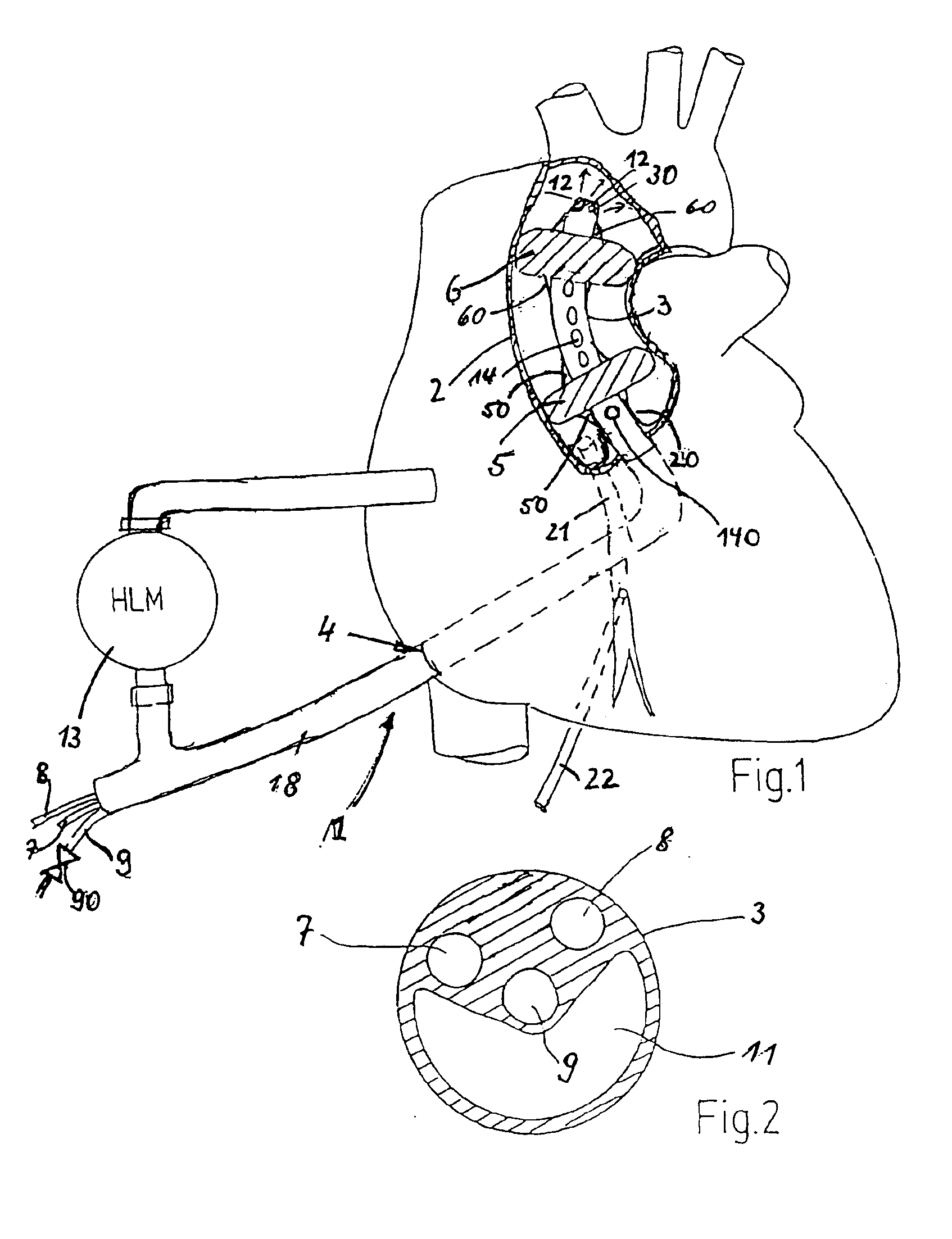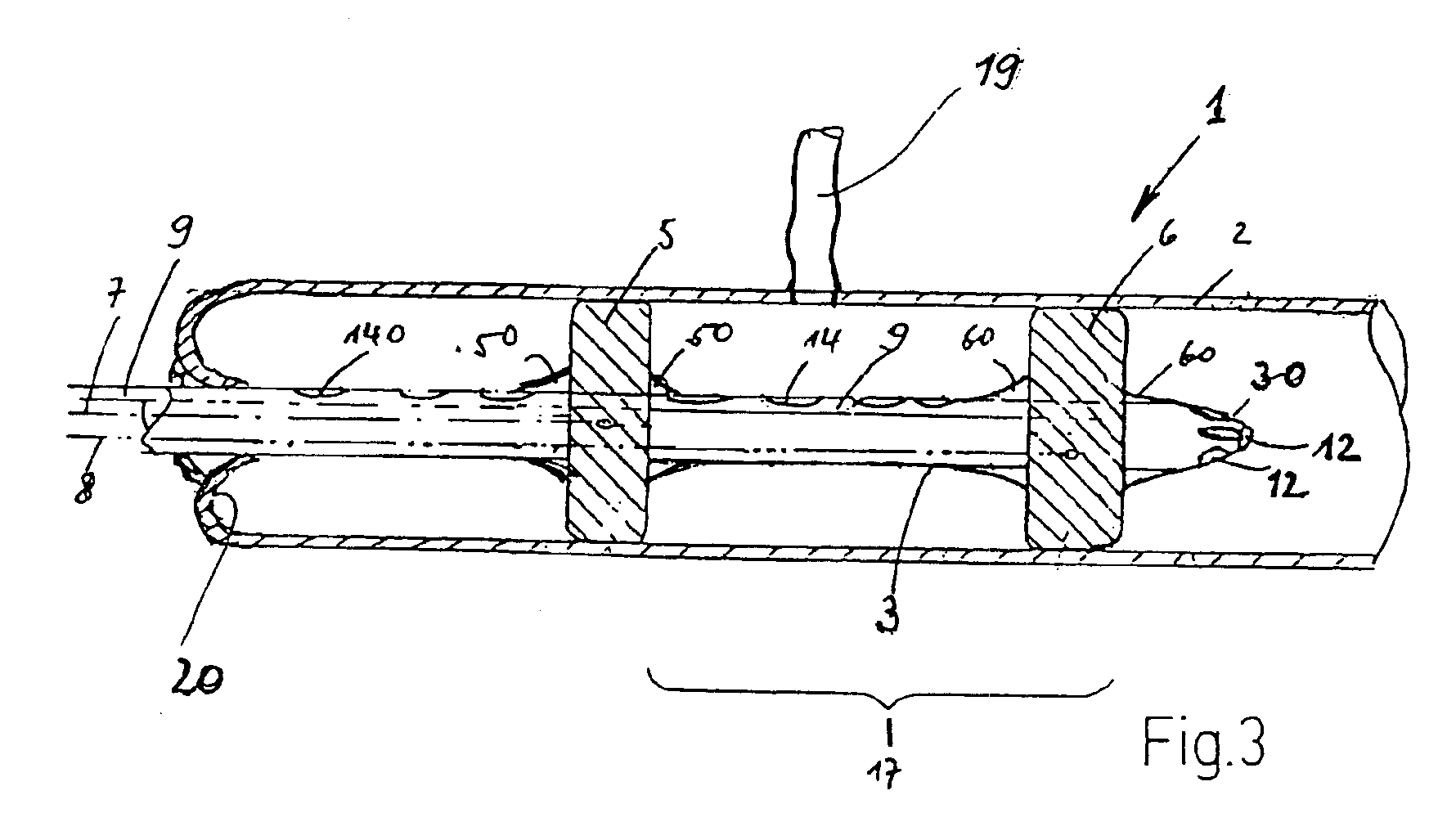Aortic balloon occlusion cannula
a technology of aortic balloon and cannula, which is applied in the field of aortic balloon occlusion cannula, can solve the problems of increasing the risk of embolism caused by calcified particles, and achieves the effects of reducing ischemic time, avoiding dangerous tangential clamping of an aortic area, and ensuring the field of surgical operation remains much clearer
- Summary
- Abstract
- Description
- Claims
- Application Information
AI Technical Summary
Benefits of technology
Problems solved by technology
Method used
Image
Examples
Embodiment Construction
[0014]The aortic balloon occlusion cannula, which is generally marked by a 1, is to occlude the ascending aorta indicated at 2, during cardiac surgeries. It contains a cannula tube 3 that is made out of an elastic material. This material enables the introduction of the cannula tube 3, while adapting to the required curvatures, into the ascending aorta 2 through a corresponding incision at 4 (FIG. 3) in the lefthand cardiac ventricle. When inserting the cannula care must be taken to pass the valvola aortae 20 as carefully as possible. Therefore, in the beginning a guide wire is placed into the heart and subsequently the cannula is inserted by means of a guide rod that is located in the cannula tube 3 and provided with a tapered end. This guide rod defines a lumen for said guide wire and is removed from the cannula tube 3 when the cannula is correctly inserted.
[0015]Cannula tube 3 can also be pre-shaped according to the curvature of the ascending aorta. Two dilatable occlusion balloon...
PUM
 Login to View More
Login to View More Abstract
Description
Claims
Application Information
 Login to View More
Login to View More - R&D
- Intellectual Property
- Life Sciences
- Materials
- Tech Scout
- Unparalleled Data Quality
- Higher Quality Content
- 60% Fewer Hallucinations
Browse by: Latest US Patents, China's latest patents, Technical Efficacy Thesaurus, Application Domain, Technology Topic, Popular Technical Reports.
© 2025 PatSnap. All rights reserved.Legal|Privacy policy|Modern Slavery Act Transparency Statement|Sitemap|About US| Contact US: help@patsnap.com



